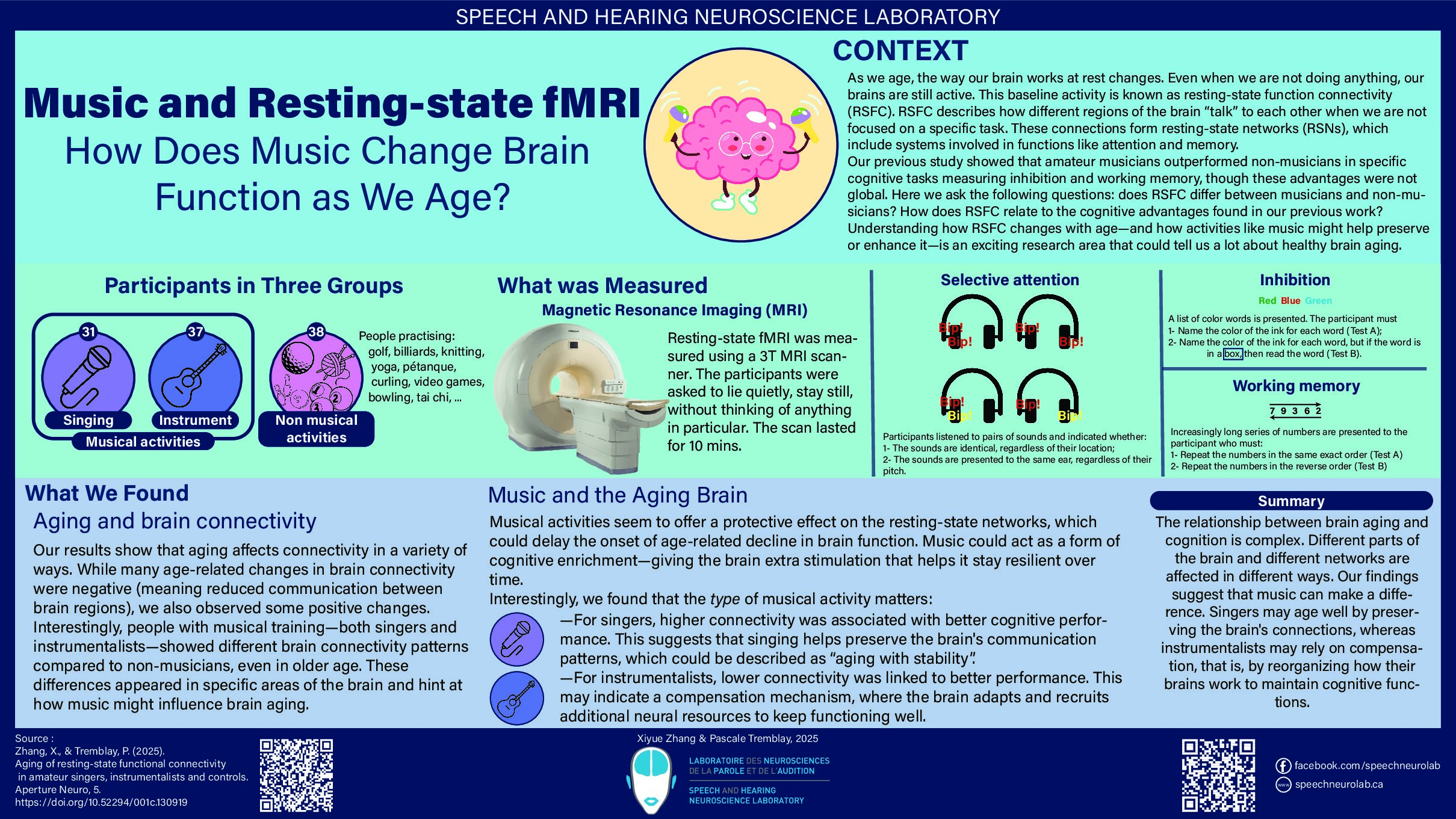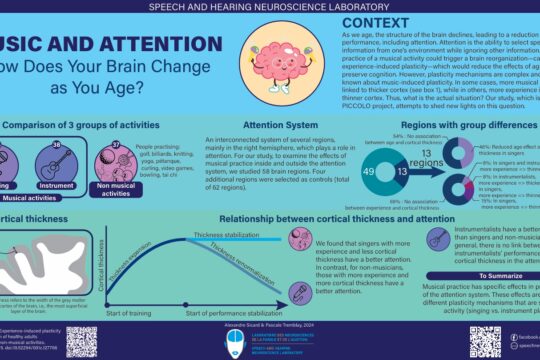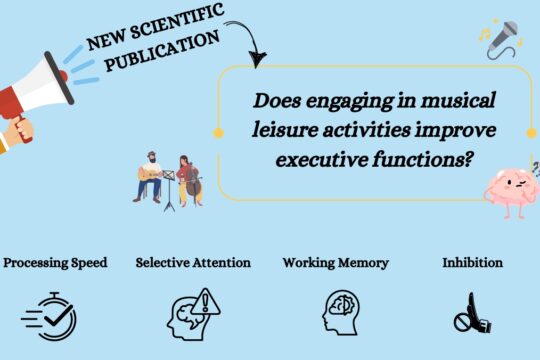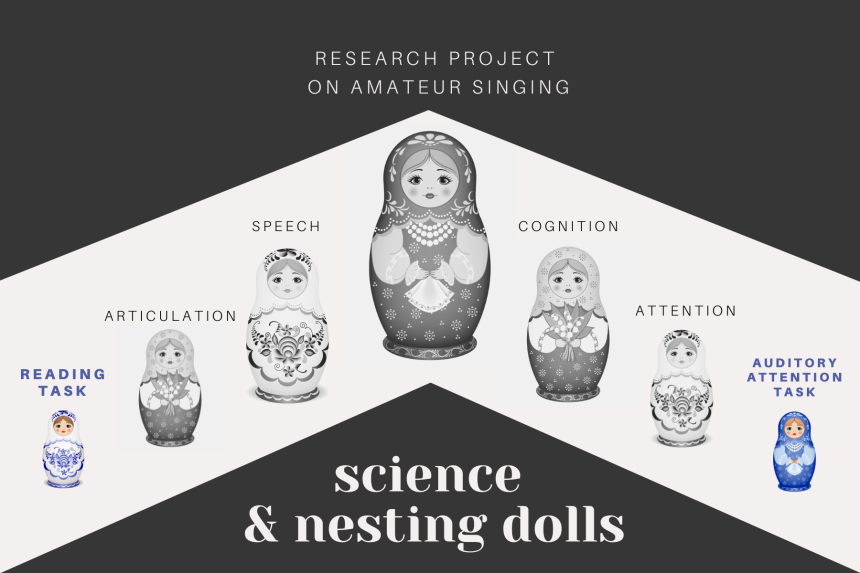
Are there benefits associated with practising singing at an amateur level? For example, do people who sing in a choir articulate more clearly, more quickly, or have better auditory attention? Do these beneficial effects mitigate the effects of aging on communication and cognition?
These are examples of questions we have tried to answer in one of the lab’s largest-scale project on amateur singing (192-2017). For this project, we collected data from 151 participants aged between 20 and 98 years old, including 76 adults who sang at an amateur level and 75 non-singing adults. Data collected included performance on several tests as well as magnetic resonance imaging (MRI) data.
In previous blog posts, we have presented the results of preliminary analyzes of articulation and voice data collected in singers and non-singers, as well as the results of an article in which we compared the ability to perceive speech in noise in singers and non-singers.
Today, we present new results arising from this project, which have recently been published in three scientific articles (Tremblay & Perron, 2022 ; Marczyk et al., 2022a , 2022b). This series of articles shows that large research projects, such as this one, often results in multiple studies, somewhat like a Russian doll, which contains a smaller figurine, which also contains a smaller figurine…
Before discussing the new results, a little reminder about this project.
Funded in 2017 and approved by the ethics committee the same year, the recruitment of volunteers for the project and data collection for this project took place from 2017 to 2018 and involved multiple team members. Testing with participants lasted for over 6 hours over two sessions. The final sample of 151 participants was divided into 76 adults who sang at an amateur level and 75 non-singers. The singers sang in a choir for at least 2 years and practised for a minimum of one hour per week. The two groups were similar in terms of age, level of education, linguistic background (first language, number of spoken languages), general cognitive functioning, global self-perceived health, mood (absence of depressive symptoms), and hearing abilities. The project included 3 visits: two at the laboratory and one at the IRM-Québec Clinic.
At the lab, most tests took place in our soundproof room. Participants who took part in the study were asked to read a text aloud, to produce vocal exercises, and to undertake a speech perception in noise test. In addition to these tests, the project also included a hearing assessment. Further, participants were asked to perform tests assessing cognitive functions. For example, they performed a selective auditory attention test, in which they had to determine whether two sounds were the same or different in terms of pitch (more or less high-pitched) and location (presented in the same ear or not). They were asked to focus their attention on one element at a time (e.g., pressing a button to indicate whether the sounds had been presented in the same ear or not, disregarding the pitch of the sounds). Participants also completed a short-term memory test. During this test, they heard series of numbers, which they had to memorize and recall.
Age Effects
As expected, we found that performance declines with age in tests of selective auditory attention and short-term memory. The analyzes of speech production in the reading task revealed that the speed of articulation decreased with age, but the quality of vowel production remained similar with age.
Effects of Singing Practice at the Amateur Level
Singers were faster than non-singers to discriminate the pitch of sounds, as indicated by a sensitivity measure (called d’). This advantage was seen in male and female singers of all ages (see Figure 1).
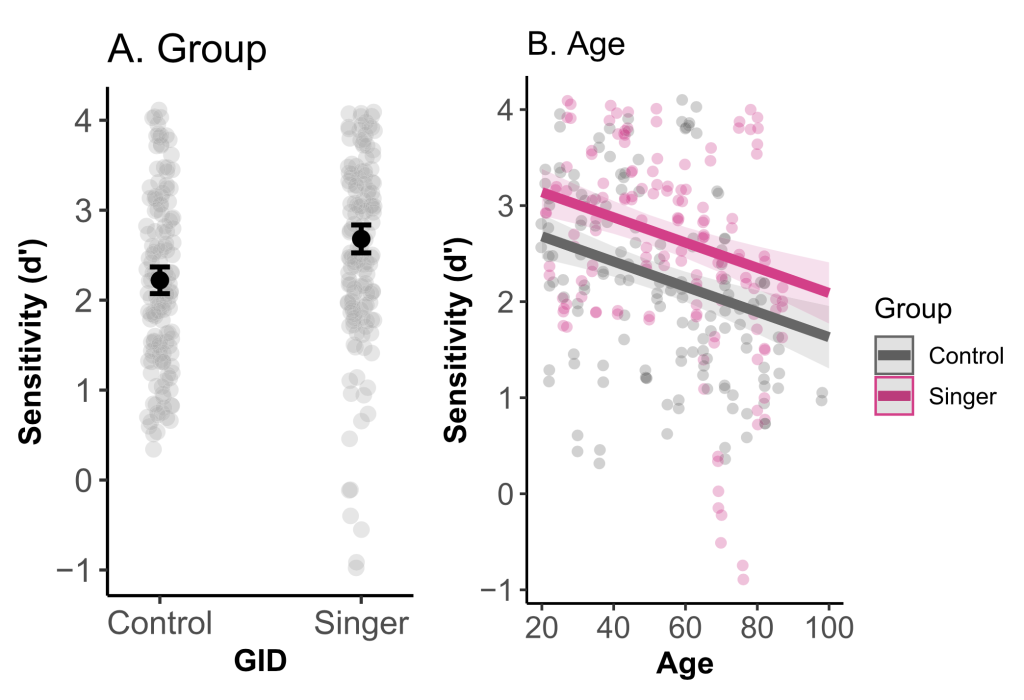
Figure 1. A) Sensitivity (d’) to discriminate the pitch of sounds in participants who do not sing compared to participants who sing in a choir. B) Illustration of the greater ability of singers to discriminate the pitch of sounds, regardless of their age.
Singers were also better at processing conflicting auditory information in general. However, singers were more distracted than non-singers when they had to determine whether two sounds had the same pitch, while ignoring the location of the sounds.
What do these results mean? Since choir singers must pay attention to the acoustic environment while singing in order to control their performance and synchronize it to others, they may be trained to listen for and detect small acoustic changes, which could result in higher distractibility in certain contexts, such as our test.
There was no group difference in the short-term memory task. With respect to articulation during the reading task, female singers differed from female non-singers: the range of up and down movements of the tongue was greater in female singers of all ages. However, vowels were not produced more distinctly by singers (men or women) compared to non-singers. The other measures analyzed did not differ according to singing practice.
In summary, some benefits of choral singing were found, but these benefits are limited. The impact of singing is seen on skills closely related to the practice of singing (e.g., the ability to discriminate the pitch of sounds) compared to skills less involved during this activity (e.g., memorizing series of numbers). In future work, it would be relevant to measure the musical abilities of the participants, to investigate whether more cognitive and speech benefits are observed in those with better musical abilities, not just those with more experience (since experience and performance are not always correlated).
Study Combining Data From Three Research Projects
Our reading data were also used in another study, the results of which were published this month (Marczyk et al., 2022b). This study also included data from participants with head and neck cancer, as well as participants with Parkinson’s disease and speech impairment, who were recruited in the co-authors’ labs, in France. This study aimed to test a new way of analyzing speech data called “spectrotemporal analysis” (i.e., an analysis of the acoustic signal variations as a function of time and frequency; see figure 2). These new metrics can be extracted quickly and automatically, without having to segment and annotate the acoustic signal, which is very time-consuming.
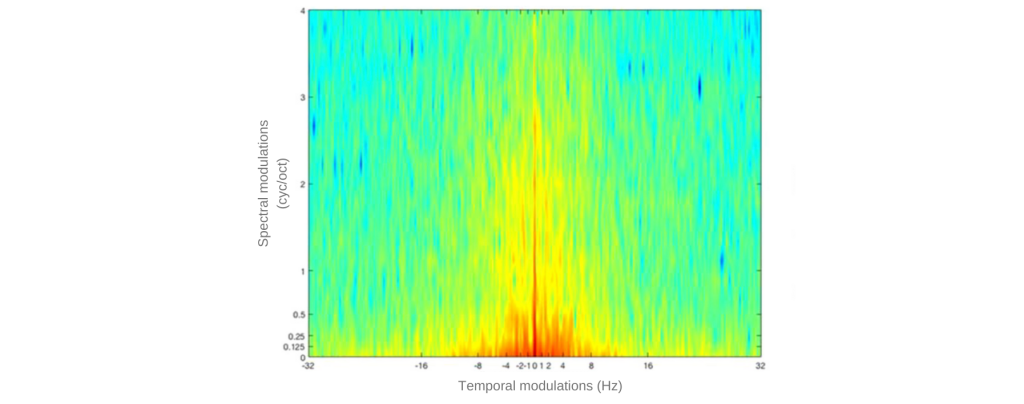
Figure 2. Example of spectrotemporal analysis for a participant from the control group (without speech impairment).
Our study showed that spectrotemporal analysis can provide similar information to conventional vowel clarity analyses. Moreover, the new analyses revealed that speech impairment was more severe in participants with head and neck cancer than in participants with Parkinson’s disease. Finally, because spectrotemporal analyses capture features of vowel production that are associated with certain speech disorders, these kinds of analyses could be useful to detect and measure speech impairments in clinical practice.
Next…
Have all the data of our singing project been released yet? Nope! We are currently in the process of analyzing fluency tasks, which assess people’s ability to find words in their head. The analyzes of this project should be completed within a few months. We are also analyzing the resting-state fMRI data from the project (a project led by Xiyue, a doctoral student in the lab). This means that other small Russian dolls that fit into the large “mother” doll that forms this project will be added!
References of scientific articles:
Marczyk, A, O’Brien, B., Tremblay, P., Woisard, V, Ghio, A. (2022). Correlates of vowel quality in the spectrotemporal modulation domain: Application in speech disorder evaluation. JASA.

